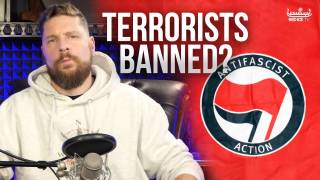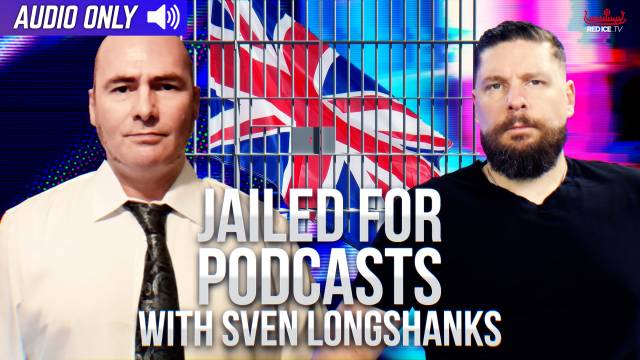BLACKLISTED: The Secret Government Rulebook For Labeling You a Terrorist
Source: firstlook.org
The Obama administration has quietly approved a substantial expansion of the terrorist watchlist system, authorizing a secret process that requires neither “concrete facts” nor “irrefutable evidence” to designate an American or foreigner as a terrorist, according to a key government document obtained by The Intercept.The “March 2013 Watchlisting Guidance,” a 166-page document issued last year by the National Counterterrorism Center, spells out the government’s secret rules for putting individuals on its main terrorist database, as well as the no fly list and the selectee list, which triggers enhanced screening at airports and border crossings. The new guidelines allow individuals to be designated as representatives of terror organizations without any evidence they are actually connected to such organizations, and it gives a single White House official the unilateral authority to place entire “categories” of people the government is tracking onto the no fly and selectee lists. It broadens the authority of government officials to “nominate” people to the watchlists based on what is vaguely described as “fragmentary information.” It also allows for dead people to be watchlisted.Over the years, the Obama and Bush Administrations have fiercely resisted disclosing the criteria for placing names on the databases—though the guidelines are officially labeled as unclassified. In May, Attorney General Eric Holder even invoked the state secrets privilege to prevent watchlisting guidelines from being disclosed in litigation launched by an American who was on the no fly list. In an affidavit, Holder called them a “clear roadmap” to the government’s terrorist-tracking apparatus, adding: “The Watchlisting Guidance, although unclassified, contains national security information that, if disclosed … could cause significant harm to national security.”The rulebook, which The Intercept is publishing in full, was developed behind closed doors by representatives of the nation’s intelligence, military, and law-enforcement establishment, including the Pentagon, CIA, NSA, and FBI. Emblazoned with the crests of 19 agencies, it offers the most complete and revealing look into the secret history of the government’s terror list policies to date. It reveals a confounding and convoluted system filled with exceptions to its own rules, and it relies on the elastic concept of “reasonable suspicion” as a standard for determining whether someone is a possible threat. Because the government tracks “suspected terrorists” as well as “known terrorists,” individuals can be watchlisted if they are suspected of being a suspected terrorist, or if they are suspected of associating with people who are suspected of terrorism activity.“Instead of a watchlist limited to actual, known terrorists, the government has built a vast system based on the unproven and flawed premise that it can predict if a person will commit a terrorist act in the future,” says Hina Shamsi, the head of the ACLU’s National Security Project. “On that dangerous theory, the government is secretly blacklisting people as suspected terrorists and giving them the impossible task of proving themselves innocent of a threat they haven’t carried out.” Shamsi, who reviewed the document, added, “These criteria should never have been kept secret.”The document’s definition of “terrorist” activity includes actions that fall far short of bombing or hijacking. In addition to expected crimes, such as assassination or hostage-taking, the guidelines also define destruction of government property and damaging computers used by financial institutions as activities meriting placement on a list. They also define as terrorism any act that is “dangerous” to property and intended to influence government policy through intimidation.This combination—a broad definition of what constitutes terrorism and a low threshold for designating someone a terrorist—opens the way to ensnaring innocent people in secret government dragnets. It can also be counterproductive. When resources are devoted to tracking people who are not genuine risks to national security, the actual threats get fewer resources—and might go unnoticed.“If reasonable suspicion is the only standard you need to label somebody, then it’s a slippery slope we’re sliding down here, because then you can label anybody anything,” says David Gomez, a former senior FBI special agent with experience running high-profile terrorism investigations. “Because you appear on a telephone list of somebody doesn’t make you a terrorist. That’s the kind of information that gets put in there.”The fallout is personal too. There are severe consequences for people unfairly labeled a terrorist by the U.S. government, which shares its watchlist data with local law enforcement, foreign governments, and “private entities.” Once the U.S. government secretly labels you a terrorist or terrorist suspect, other institutions tend to treat you as one. It can become difficult to get a job (or simply to stay out of jail). It can become burdensome—or impossible—to travel. And routine encounters with law enforcement can turn into ordeals.In 2012 Tim Healy, the former director of the FBI’s Terrorist Screening Center, described to CBS News how watchlists are used by police officers. “So if you are speeding, you get pulled over, they’ll query that name,” he said. “And if they are encountering a known or suspected terrorist, it will pop up and say call the Terrorist Screening Center…. So now the officer on the street knows he may be dealing with a known or suspected terrorist.” Of course, the problem is that the “known or suspected terrorist” might just be an ordinary citizen who should not be treated as a menace to public safety.Until 2001, the government did not prioritize building a watchlist system. On 9/11, the government’s list of people barred from flying included just 16 names. Today, the no fly list has swelled to tens of thousands of “known or suspected terrorists” (the guidelines refer to them as KSTs).[...]Read the full article at: firstlook.org





















